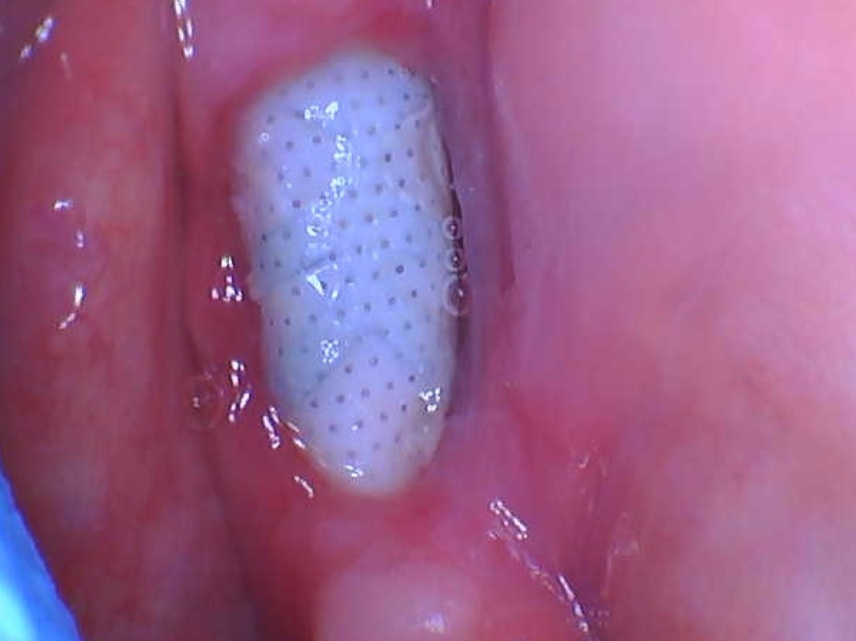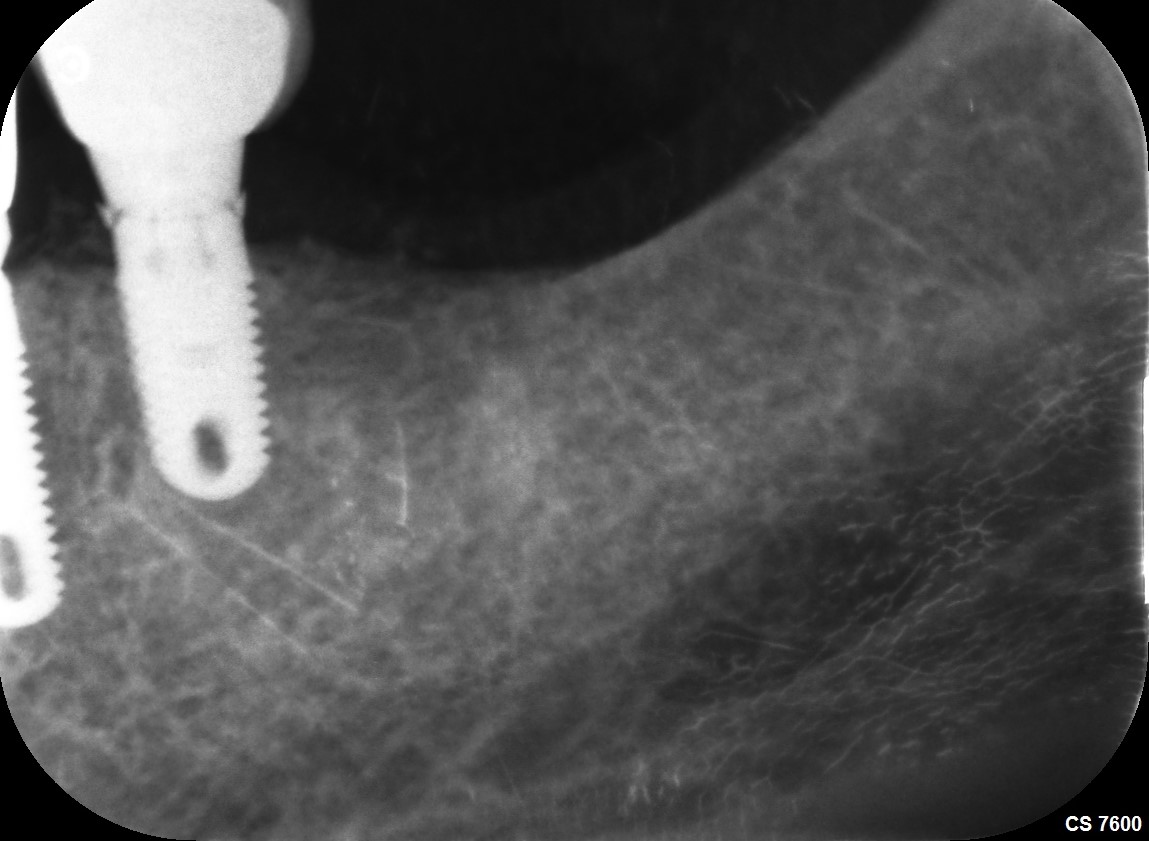Small Tear Over Graft Material: Best Course of Action?
Dr. S. asks:
I have placed a dental implant with an onlay graft covered with a Bio-Gide membrane [Editor: Osteohealth, a bilayer resorbable membrane]. When I was placing the membrane over the graft site, it developed a small tear over the graft material which is now exposed at that point.
What should I do at this point? Should I attempt to patch the graft? Should I try to replace the membrane? Should I just let have the patient try to keep the area clean and rinse daily with chlorexhidine? I have never faced this problem before. Comments would be appreciated. Thanks.
5 Comments on Small Tear Over Graft Material: Best Course of Action?
New comments are currently closed for this post.
David Levitt
12/27/2007
The fact that the membrane tore is immaterial to the treatment. I will make several assumptions. The first is that the graft is non-mobile. The second is that you see no evidence of granulation over the exposure. The third is that your patient is otherwise asymptomatic. The underlying problem is the viability of the bone. Bone that is viable does not generally expose in this manner. This has to be treated similar to a sequestrectomy. You need to remove the non viable bone. You don't want to make an incision and reflect tissue however as this could jeopardize the whole graft. The simplest thing to do is use a high speed handpiece and a round bur or donut diamond to remove the surface of the bone until it is concave beneath the level of the surrounding soft tissue. You will find that if you do this carefully and do not nick the tissue no anesthetic is needed as dead bone has no feeling. You will also find that the bone does not bleed at first but once you get to viable bone some bleeding is present. You will find after this procedure that the area granulates in. Your mouth rinse is a good idea as well.
Dr. Ben Eby
1/2/2008
If you want new tissue to grow over the grafted site, my experience is that saline rinses work better than clorhexidine or any other antibacterial agent that kills cells.
To answer you question, It is difficult without seeing what you are dealing with. How long has the graft been in the mouth? How large is the area with the exposed graft material? What onlay graft material was used? Are there any other symptoms?
Dr. Levitt's idea works well if the onlay graft is a block graft that is secured by screws and totally stable.
Dr K
1/3/2008
I agree with the above comments. I would like to add that it is my experience, in places with minimal blood supply, adding a membrane is not always advantageous. This is the case in the posterior mandible with thin native bone (mostly cortical). Also, you may be surprised by how much bone you will still have after all is said and done...good luck
King of Implants
1/12/2008
The tear in your membrane has nothing to do with the graft exposure. Follow the recommendations of Dr. Levitt above and you should be OK.
Dr. Ali Hassani
1/12/2008
If onlay graft is fixed,you can recommend chlorhexidin mouth wash and visit daily your patient in office and apply copious irrigatin with syringe for one week.If you see the some granulation tisse you must continue irrigation,if you didn't any granulation tissue ,you can remove some exposed bone with high speed bur and continue irrigation.if there is sign of chronic infection ,you can use chlohexidin gelle after irrigation.
















